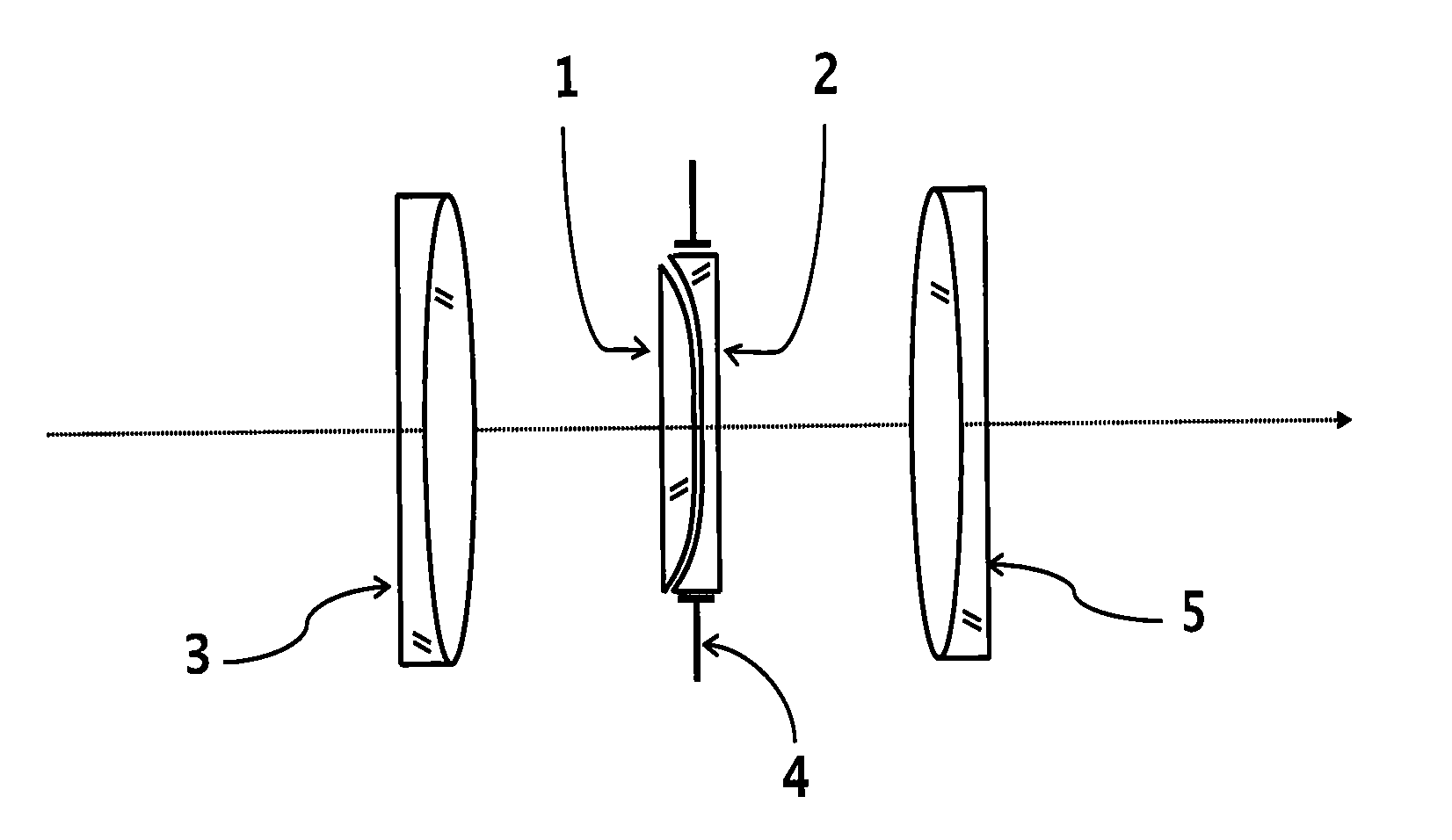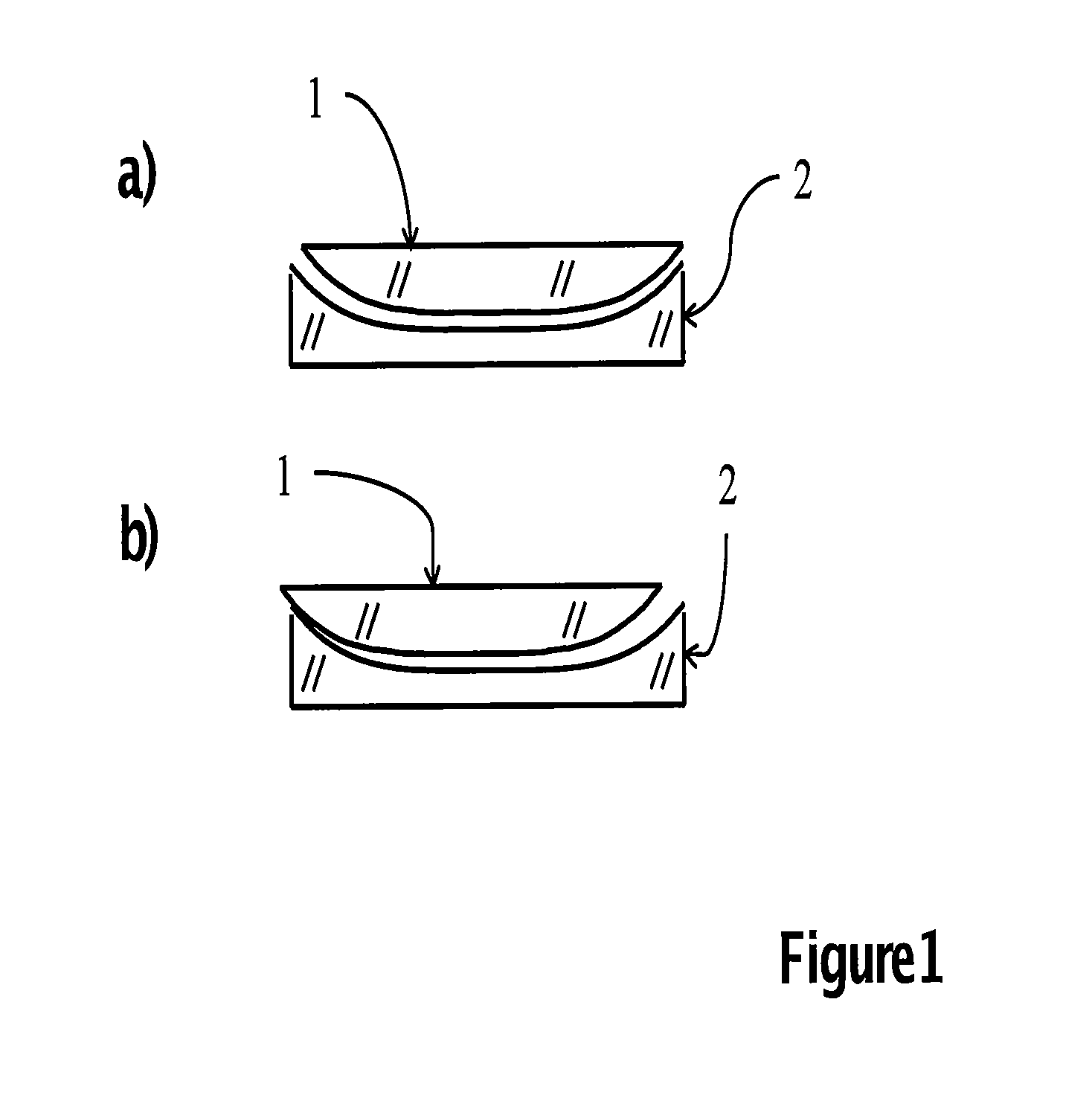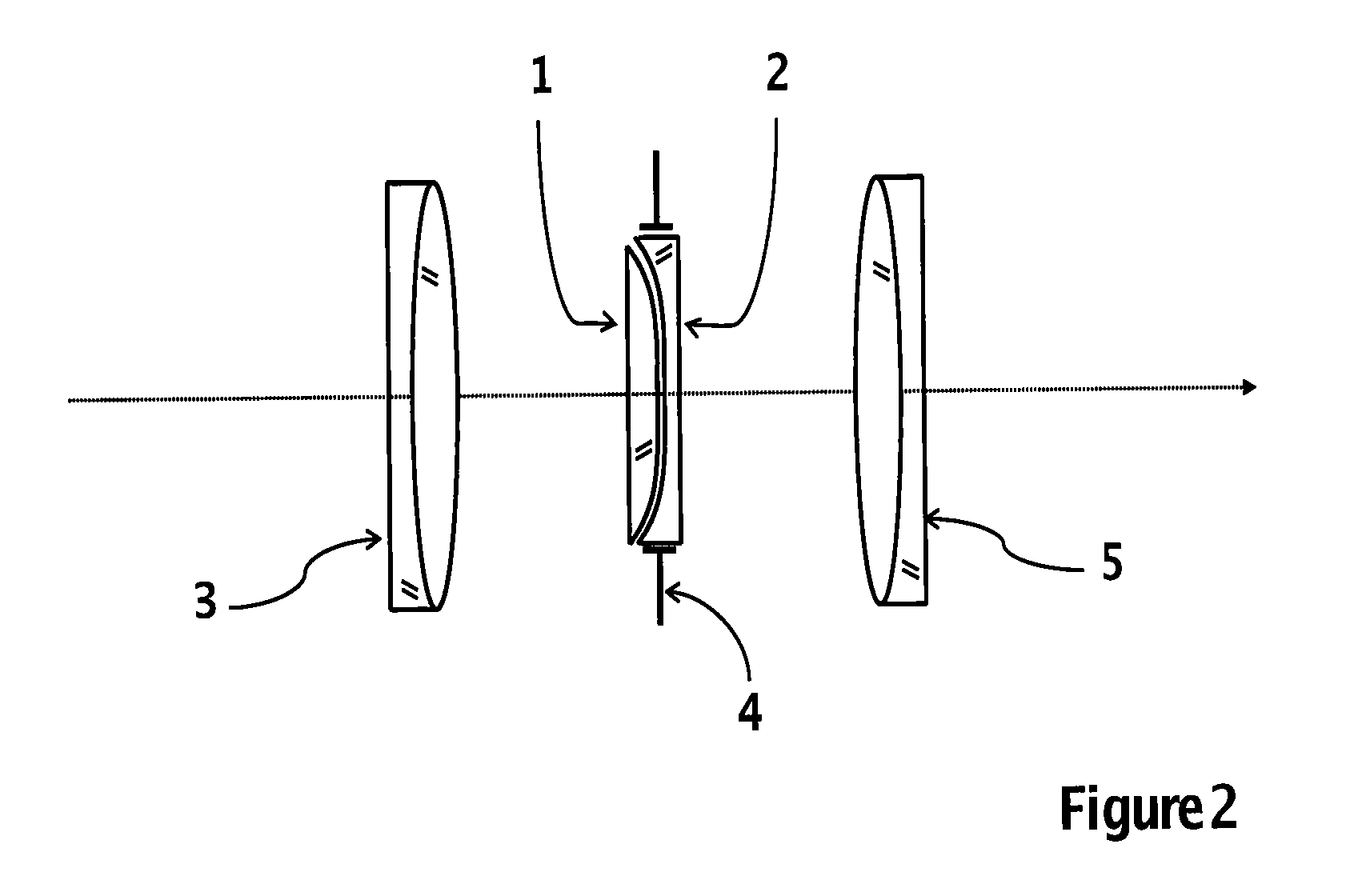Optical system with variable field depth
a variable field depth, optical system technology, applied in the field of optical systems, can solve the problems of reducing the resolution and luminous capture of the optical system, closing the pupil,
- Summary
- Abstract
- Description
- Claims
- Application Information
AI Technical Summary
Benefits of technology
Problems solved by technology
Method used
Image
Examples
examples
[0035]The following is a discussion of a new optical path distribution of φ (α) that exemplifies the present invention. If selected
φ(α)=cos(πα / 2Ω) (8)
[0036]In equation 8 the Greek letter Ω denotes (as shown above in equation 1) the upper limit of α. It should be recognized in equation 8 that the function cos (πα / 2Ω) is a symmetric function in α, so it is straightforward to verify that equation 8 complies with the condition of equation 6. Additionally, from equation 8 it is easily obtained that the optical path difference is
φ(α+υ / 2)−φ(ααυ / 2)=−[2 sen(πυ / 4Ω)] sen(πα / 2Ω) (9)
[0037]Again, it is straightforward to verify that the result of equation 9 satisfies the condition in equation 7.
[0038]Additionally, obtained from equation 9, is that the function sin (πα / 2Ω) is amplified by the factor [2sen (πυ / 4Ω)]. The amplification factor depends only on the variable υ, which is known to represent the displacement between the two lenses in the pair used in the present invention. Thus for zero d...
PUM
 Login to View More
Login to View More Abstract
Description
Claims
Application Information
 Login to View More
Login to View More - R&D
- Intellectual Property
- Life Sciences
- Materials
- Tech Scout
- Unparalleled Data Quality
- Higher Quality Content
- 60% Fewer Hallucinations
Browse by: Latest US Patents, China's latest patents, Technical Efficacy Thesaurus, Application Domain, Technology Topic, Popular Technical Reports.
© 2025 PatSnap. All rights reserved.Legal|Privacy policy|Modern Slavery Act Transparency Statement|Sitemap|About US| Contact US: help@patsnap.com



